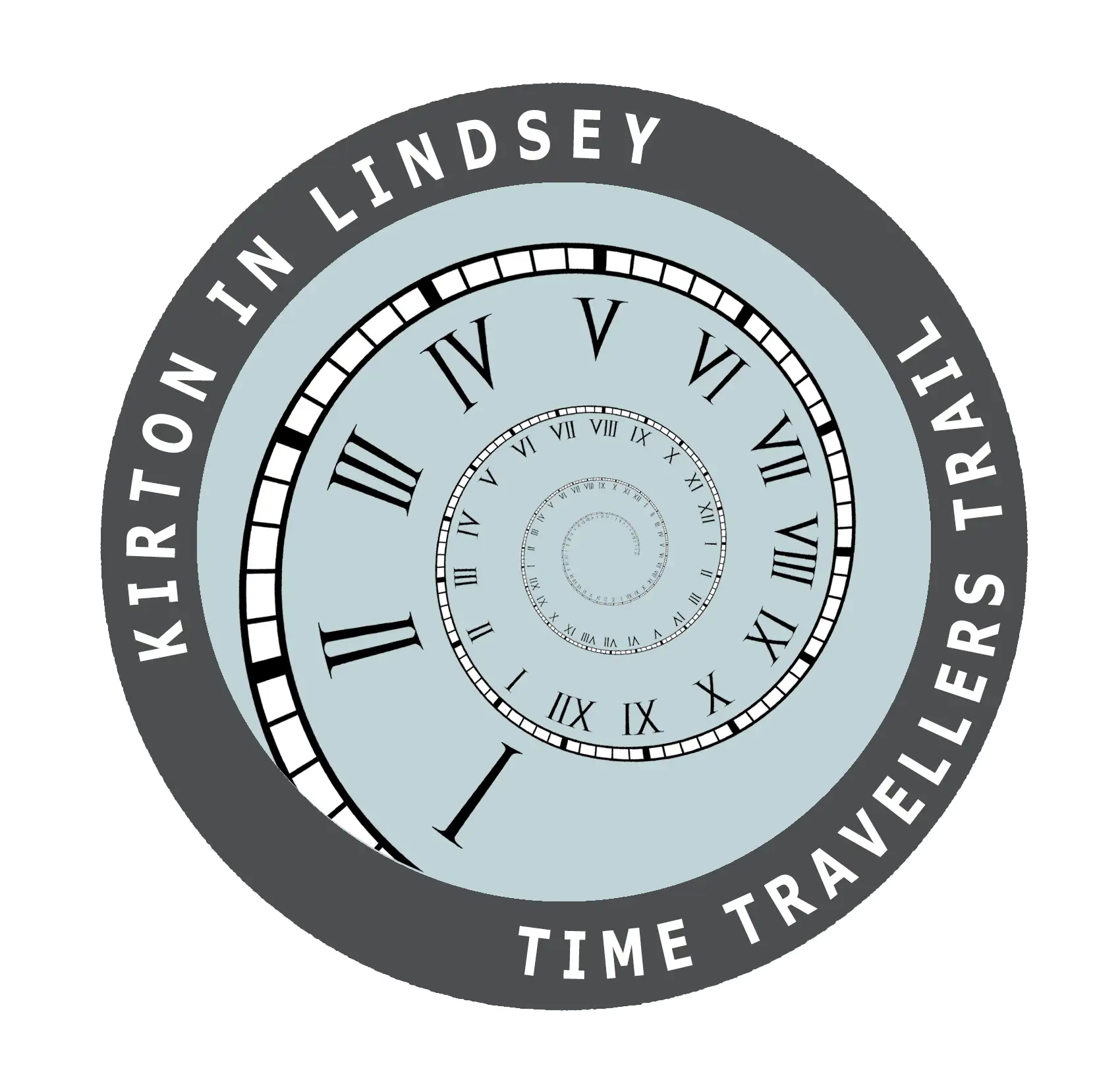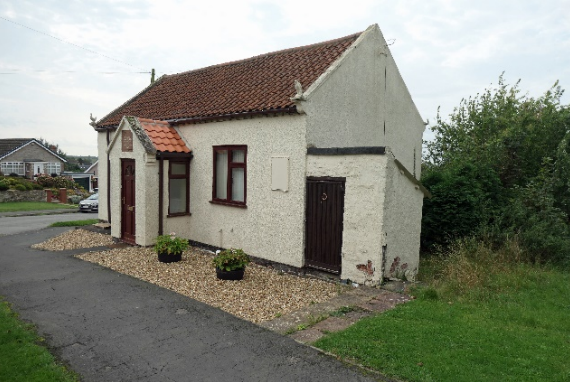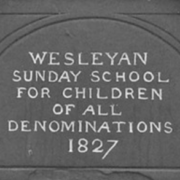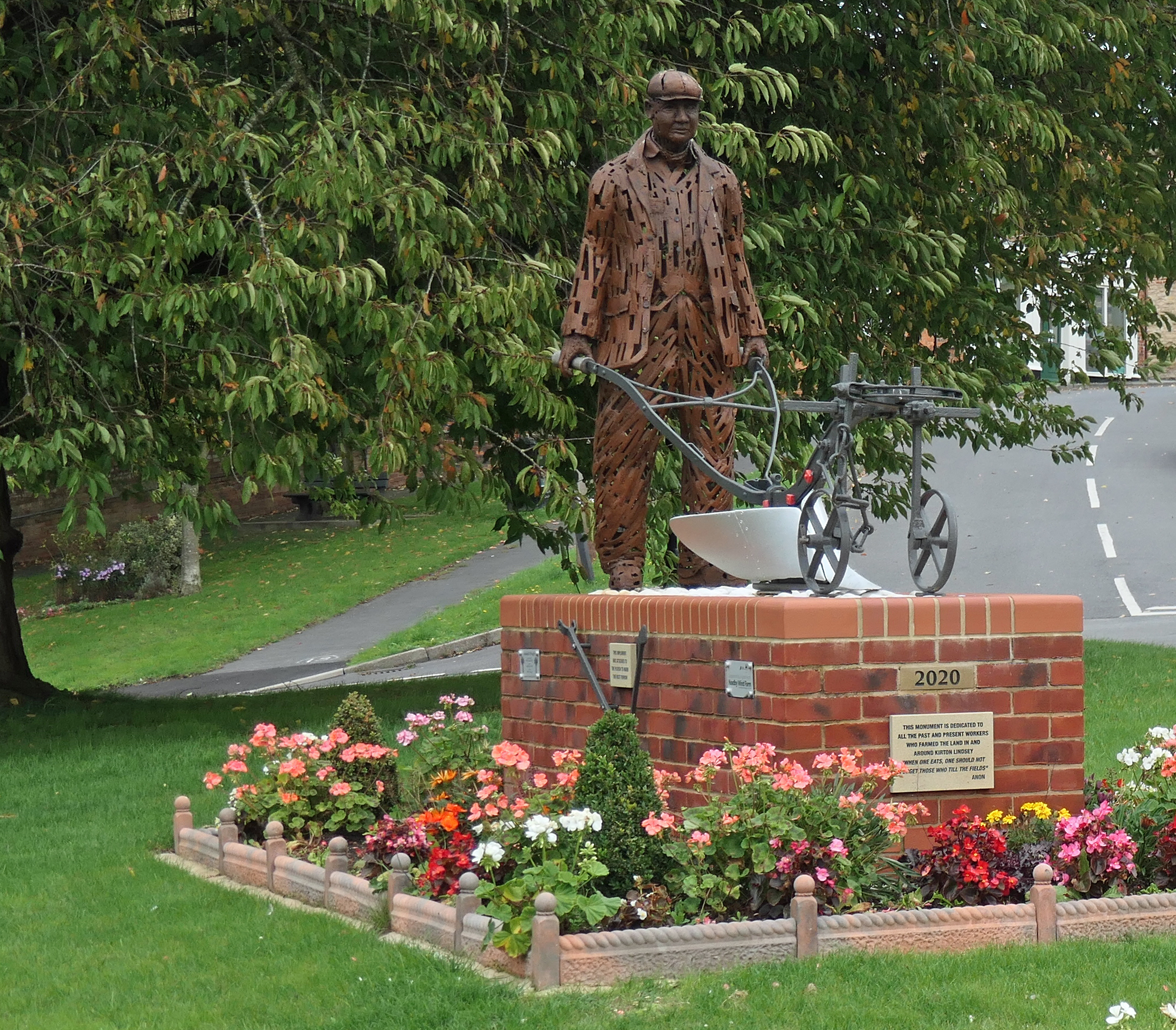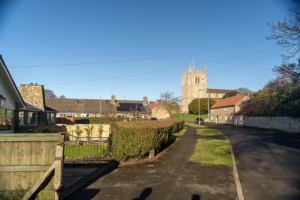20
The Old Sunday School and Grandad’s Plough
Here we have two points of interest almost 200 years apart so we are true time travellers!
The Wesleyan Sunday School
This residential building was once a Wesleyan Sunday School. It is believed to be one of the first buildings used for Methodist worship in Kirton. Permission for its use was granted by the Lord Bihop of Lincoln in 1830 as, presumably, it was a building on church land. The stone above the door reads 1827 but it may have been added later.
We know very little more about it except that the inscription ‘for children of all denominations’ sets it apart as an act of forward thinking.
It was a response to many concerns about the health and spiritual welfare of the young at the time but most schools were set up along denominational lines or were single sex. This ‘open to all’ statement made it very unusual.
Grandad’s Plough
The modern statue you see here is Grandad’s Plough. It was the brainchild of a local resident, Tony Bartlett, whose own family had worked the land, and wanted to commemorate the lives of rural working people of the past whose labours were often taken for granted.
The statue of the ploughman was made by local sculptor James Sutton and has attracted much local interest and pride.
The inscription ‘Chirchetone’ uses the name for Kirton as it appears in the Domesday Book of 1086. Even then the town was a substantial settlement of 117 households and was a major manorial centre with a large number of subsidiary estates stretching as far as Newark.
Now cross Queen Street and walk up the hill back to the Market Place where you will find the George Hotel (our final destination).
